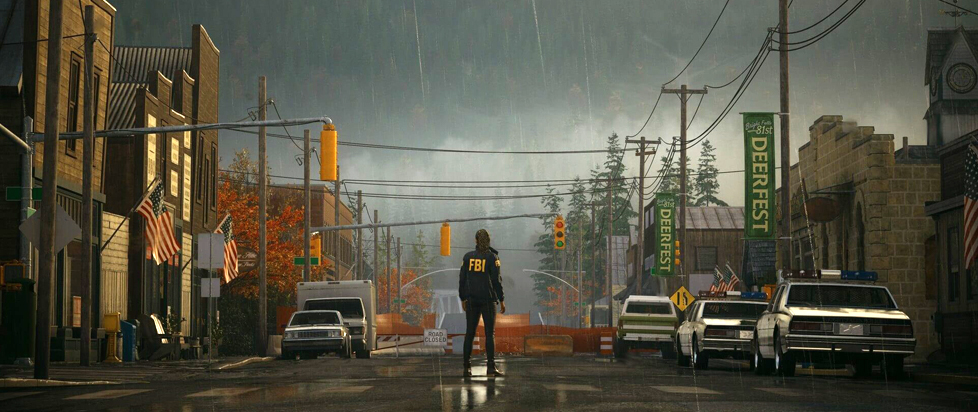
Best Architecture in Games

This column is a reprint from Unwinnable Monthly #170. If you like what you see, grab the magazine for less than ten dollars, or subscribe and get all future magazines for half price.
———
Architecture and games.
———
This time around, even despite my normal aversion to oversimplified rankings with categorical scores, the sheer number of noteworthy architectural accomplishments in videogames throughout 2023 has once again moved me to put together a short, concise and mostly unordered list of the best level design and environmental art of the year. This compilation, adhering as usual to alphabetical order, highlights the top ten standout examples. These each contribute a unique architectural perspective to the medium, showcasing the incredible innovation and technical prowess of this continuously developing field. I believe the significance of these achievements are worth acknowledging, so each entry has been accompanied by a brief explanation of my reasoning, offering a glimpse into the transformative power of digital media during this long year.
Alan Wake 2
Alan Wake 2 ventures into a captivating world where architecture plays a pivotal role in the psychological horror experience. The story unfolds in the fictional towns of Bright Falls and Watery, with architecture becoming a dark and haunting canvass for the mysterious and eerie events which take place. The highly detailed environments, everything from serene lakeside cabins to abandoned theme parks, heighten the atmospheric tension. The streets and alleys of the two towns are creepy in their own right, creating an interesting contrast with the concrete jungle of the other main setting, New York. In both of these cases, Alan Wake 2 makes use of architecture as both a backdrop and a mechanic for intensifying the psychological tension of the tale being told, enveloping you in a highly evocative and suspenseful game world.

Assassin’s Creed Mirage
Assassin’s Creed Mirage is truly a testament to the architectural prowess of its level designers, even within the impressive context of the series. The architectural splendors of Baghdad during the ninth century capture the essence of the period. The game dives into the details of this politically tumultuous time, taking you on a trip through its unfortunately underserved historical setting. The architectural wonders of the Islamic Golden Age become a vital backdrop for such historical intricacies. Similar to previous entries in this long running series, Assassin’s Creed Mirage skillfully weaves the tales of notable figures into the narrative, blending some storytelling into the meticulously recreated structures. The game invites you to explore the architectural grandeur of a bygone era, seamlessly intertwining history with digital media.
Baldur’s Gate 3
Baldur’s Gate 3 unfolds a rich tapestry of architectural marvels. The game presents a diverse and immersive world where architectural elements play an important part in the intricate storytelling. The city of Baldur’s Gate itself stands as a testament to the intricate design, with its sprawling urban landscapes and detailed structures, ranging from Romanesque to Gothic in terms of style. As you venture through the numerous dungeons, caves and caverns, Baldur’s Gate 3 showcases a wide variety of architecture including ancient ruins and abandoned buildings within sweeping, broken landscapes. These highly dynamic environments contribute to the imposing atmosphere, making the architecture not just a backdrop but a vital aspect of the visual and narrative experience.
Hogwarts Legacy
I was reluctant to include Hogwarts Legacy on this list for what should at this point be fairly obvious reasons, but at least when it comes to the architecture, I can hardly deny the incredible attention to detail. The game creates a spellbinding architectural experience within its well-known world of wizarding. Hogwarts Legacy transports you to a meticulously crafted Hogwarts, introducing architectural wonders rooted in magical lore. The iconic castle of Hogwarts itself, reimagined with all sorts of architectural flair, features enchanted classrooms and secret passages. The vast open world design includes diverse magical landscapes from ancient forests to hidden caves, each reflecting a spectacular fantasy aesthetic.

Jusant
Jusant introduces a unique architectural marvel in the form of a tall tower divided into distinct biomes with diverse traversal mechanics and challenges. Traveling to the top of this tower, you unravel the mysteries of a lost civilization, piecing together its untold story. The eerie concrete ruins jut out into the open sky, ending abruptly before a sweeping desert landscape. The interactive elements of the gameplay mechanics are truly impressive, consisting of climbing and mountaineering techniques including the ability to place pitons, crucial for safety. Strategically placed ropes help with efficient backtracking. The game also incorporates an aquatic player companion which helps you explore by revealing clues and presenting various interactions hidden in the level design. Jusant blends architectural intricacy with mechanical innovation, offering dynamic and engaging gameplay within the confines of its enigmatic world.
Lies of P
Lies of P intricately weaves a narrative through its architectural elements, an accomplishment in and of itself, but in this particular case, a true triumph. The game unfolds within a dystopian world where the environment becomes an elegant tool for superb storytelling. The architectural nuances featuring towering structures and desolate buildings mirror the dark and mysterious undertones of the narrative. The oppressive cityscape and clandestine locales build an imposing atmosphere, leveraging architecture to convey the dark and moody essence of the game. This of course creates a compelling synergy between the level design and the unfolding narrative as you embark upon your grim and gloomy journey through the game world.
Like a Dragon: Ishin!
Like a Dragon: Ishin! masterfully integrates historical architecture into its rather atypical narrative, at least for the series. Taking place in the highly dynamic period that was nineteenth century Japan, the game showcases the architectural splendors of the Edo and Meiji periods, ranging from bustling streets to both traditional and not-so-traditional interiors. The attention to detail in the various recreations of well-known landmarks of course adds another layer of depth and complexity to the experience. The architectural diversity including teahouses and feudal residences only further builds the authenticity of this intricately designed game world. The meticulous care taken in reconstructing such period-specific structures becomes a key element in conveying the rich historical tapestry of this particular time and place, dropping you into a visually stunning and culturally resonant gameplay experience.
Resident Evil 4
What can I say about the architecture in the remade Resident Evil 4? The game reimagines the iconic survival horror setting, while still managing to remain incredibly true to its grim source material. The remake retains the atmospheric essence of the original, featuring intricate environments like the eerie rural village and the scattered Romanesque, Baroque and Gothic structures. The dynamic lighting and revamped environmental art only serve to intensify the overall experience, the mysterious castle and surrounding area showcasing a fusion of horror and fantasy aesthetics. Through its meticulous level design decisions, Resident Evil 4 transforms the familiar locations into haunting landscapes where the architecture takes center stage, becoming a crucial tool for pulling you into the terrifying ambiance of the game.

Spider-Man 2
Spider-Man 2 invites you to explore a dynamic and visually stunning representation of New York. The finely crafted cityscapes boast meticulously detailed buildings, iconic landmarks and of course the famously bustling streets. Swinging between skyscrapers and maneuvering through back alleys, you’ll come across all kinds of interesting encounters within this realistic and vibrant architectural environment. The attention to architectural detail in the game extends to the interiors, reflecting the depth and complexity of this notorious concrete jungle. Spider-Man 2 provides a breathtaking open world environment for you to explore and of course marvel at its intricate design.
The Legend of Zelda: Tears of the Kingdom
The Legend of Zelda: Tears of the Kingdom immerses you into the captivating land of Hyrule, a place where architecture is a narrative cornerstone. The majestic focal point of the entire game, Hyrule Castle, anchors the grandeur of the now collapsed kingdom. The diverse regions from forests to deserts showcase meticulous architectural details, while Sheikah and Zonai technology introduce futuristic elements. Ruined temples and ancient structures contribute to the overall feeling of historical depth. The integration of verticality enhances the various other gameplay mechanics, as you explore bustling towns below serene shrines, floating aloft. This synthesis of the traditional gameplay elements of the series and the innovative design ensures that architecture becomes a vital storytelling component in this immersive world.
———
Justin Reeve is an archaeologist specializing in architecture, urbanism and spatial theory, but he can frequently be found writing about videogames, too. You can follow him on Twitter @JustinAndyReeve.




